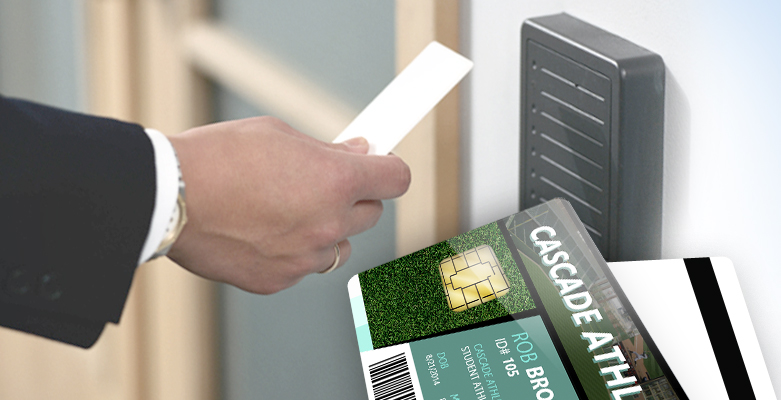Encoding your ID cards can greatly add to the function of your cards – that employee ID card can now check out materials, pay for parking, or unlock the front door. Do you know all your encoding options?
Barcodes
Barcodes are the most common type of encoding because they require no special equipment to encode, and work in a wide range of functions. To encode a barcode you simply need a card printer, blank cards, and software with barcode functionality.
Magnetic Stripe Cards
Magnetic stripe cards are extremely popular, used for everything from bank cards to hotel room keys and student ID cards. To encode these cards you will need a printer with magnetic stripe encoding features (often an upgrade option), magnetic stripe cards, and software that can encode magnetic stripe cards.
Smart Cards
Smart cards (a general term for several types of encoded cards) are gaining popularity because of the large amount of data they can store and the many ways they can be used. To encode a smart card you will need a printer with smart card encoding (also an upgrade option, and not available on every model), smart cards, and software that can encode them (often limited to more advanced software).
Proximity Cards
Proximity cards are a specific type of smart card, noted for the fact that they only need to get within range of a card reader to work instead of physically touching the reader – this makes them fast and easy to use for commuters on public transit or entrances into busy office buildings.
To encode a prox card you will also need a printer with smart card encoding, proximity cards, software that can encode them, and a reader system installed at the doors, entrances, turnstiles, etc.





